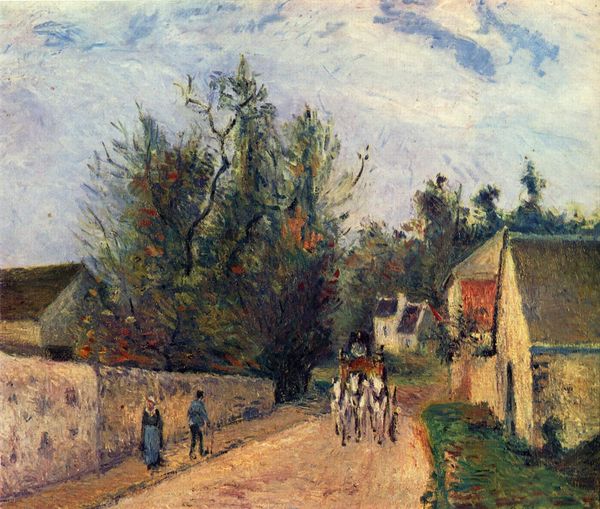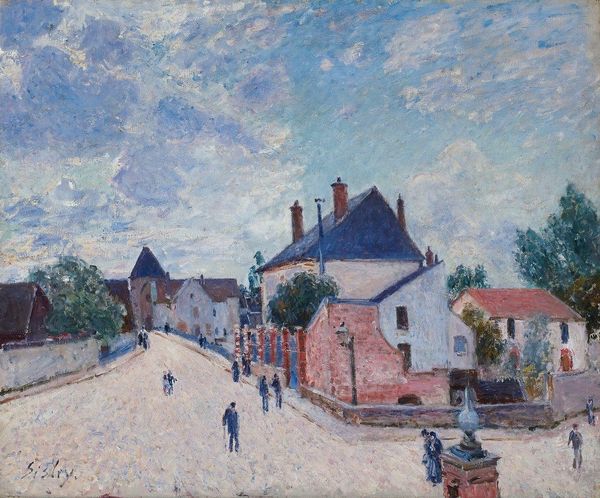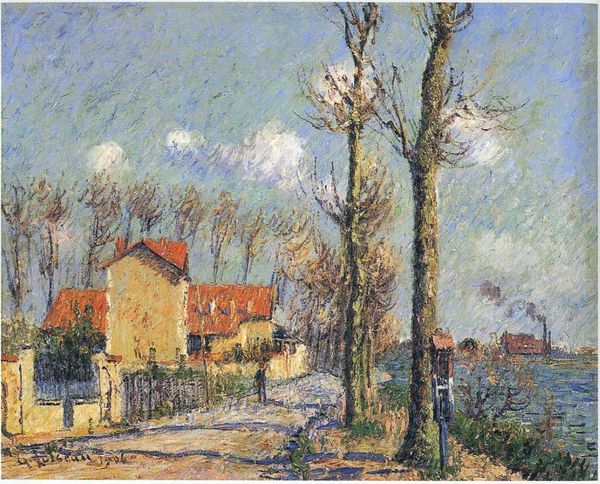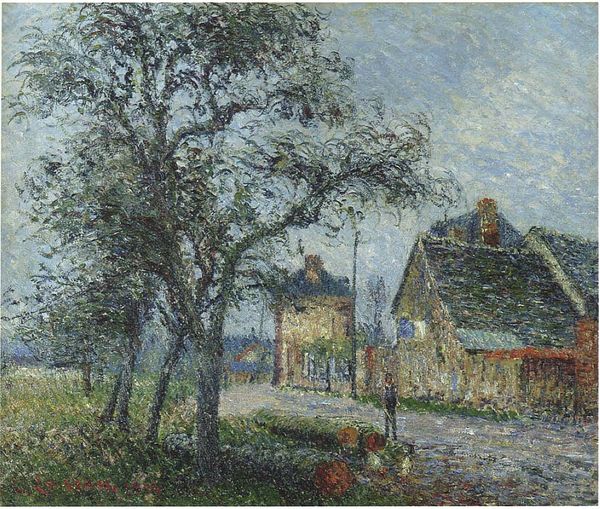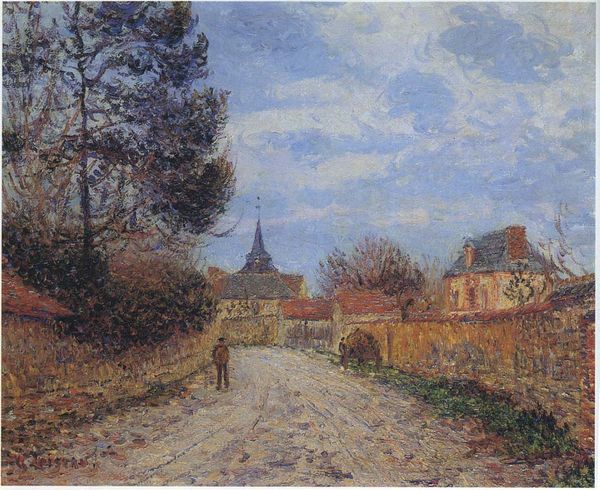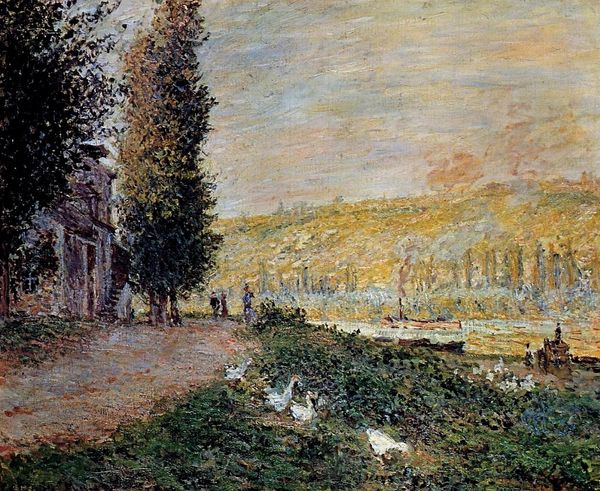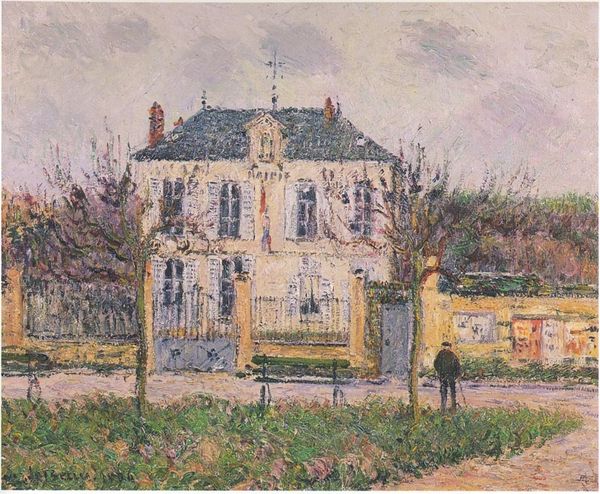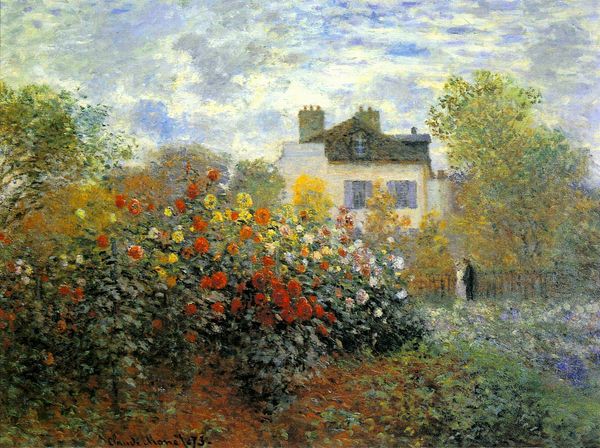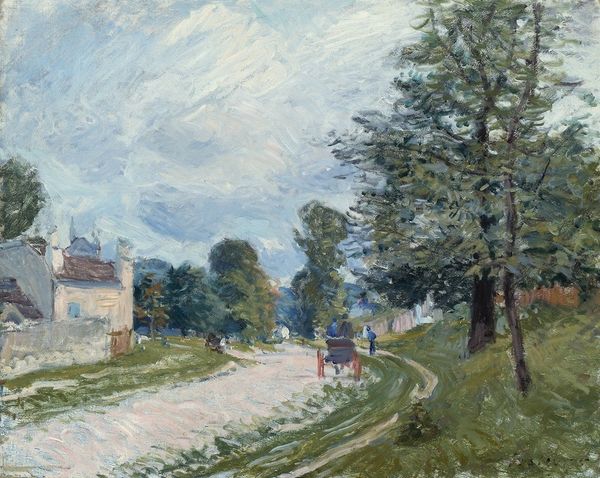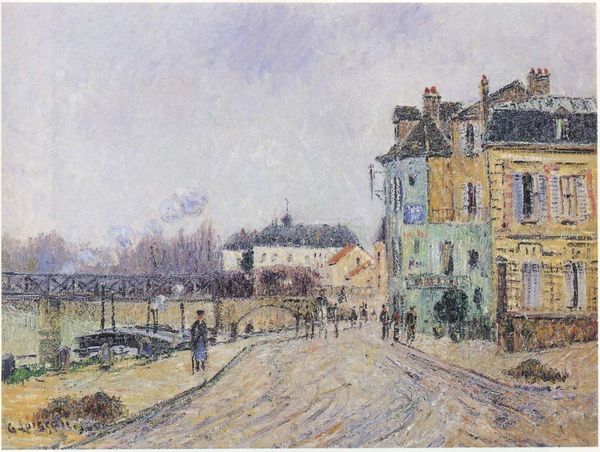
The Rispal Restaurant at Asnieres 1887
0:00
0:00
vincentvangogh
Henry W. Bloch Collection, Shawnee Mission, KS, US
painting, oil-paint
#
tree
#
sky
#
painting
#
impressionism
#
impressionist painting style
#
oil-paint
#
landscape
#
house
#
impressionist landscape
#
oil painting
#
cityscape
#
street
#
building
Copyright: Public domain
Curator: Before us hangs Vincent van Gogh’s "The Rispal Restaurant at Asnières," painted in 1887. Note the materiality, the tangible layering of oil on canvas that defines the urban landscape. Editor: My goodness, what an utterly still moment he's captured! It's like all the world's dramas have paused for a smoke break outside this unassuming little restaurant. The texture just pulls you in. Curator: Indeed. Considering its time and place, the work highlights the intersection of burgeoning urban leisure culture and artistic experimentation. Van Gogh’s use of visible brushstrokes disrupts academic traditions by foregrounding the act of painting itself, mirroring broader societal shifts towards valuing labor and artisanal craft. Editor: There’s such a beautiful sadness in those brushstrokes, though. Each one seems deliberately placed, like little sighs or tiny bursts of defiance. The building looks sturdy but faded, as if life’s energy is being drained slowly but surely. And yet, there are people! Life goes on, right? It's fascinating how the materiality enhances the melancholy and gives a visual presence to the impermanence of being. Curator: Precisely! Van Gogh's decision to depict this restaurant on the outskirts of Paris speaks volumes about the social spaces he chose to engage with. Asnières was a place where working-class Parisians sought refuge, finding momentary escape. Van Gogh wasn't merely painting a building, but documenting—and perhaps participating in—the evolving class dynamics of his time. Note the contrast between the ordered facade and the rather roughly worked street—highlighting this tension. Editor: That faded sign “Restaurant Rispal" adds such a peculiar character, like a forgotten slogan. I think you’re right. It almost becomes a portrait of urban experience. It's a reminder that places have histories. Curator: Reflecting on the piece, we observe Van Gogh pushing against the rigid norms of artistic representation while grounding his exploration in the real-world conditions of late 19th-century Paris. Editor: Exactly! A restaurant becomes more than just a building – it's a testament. For me, that whisper of history echoing through brushstrokes and mortar is utterly poignant.
Comments
No comments
Be the first to comment and join the conversation on the ultimate creative platform.
